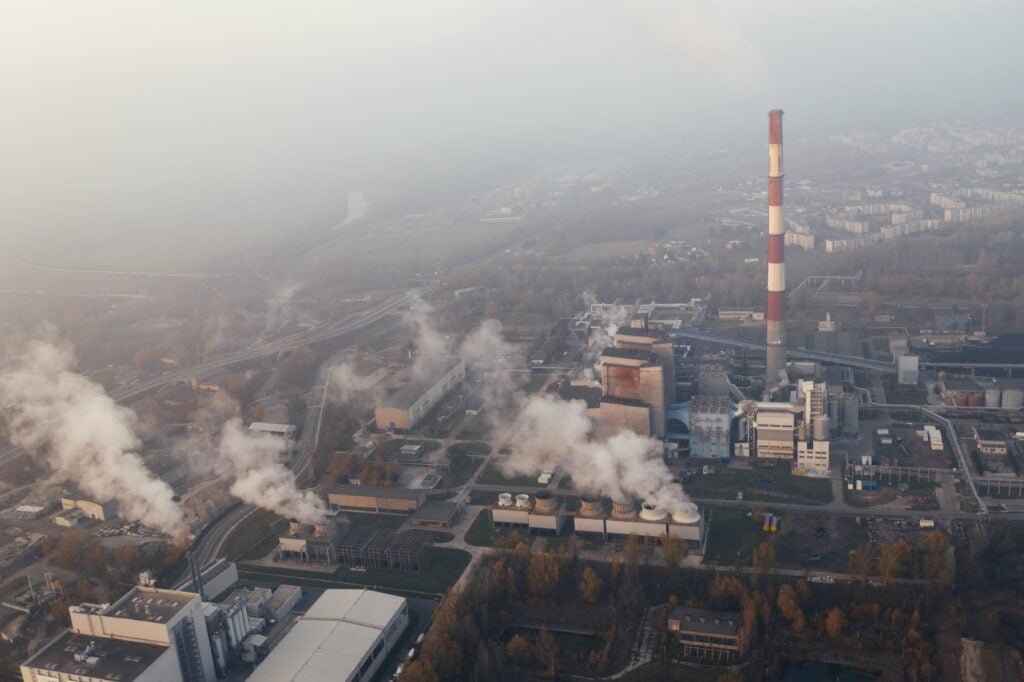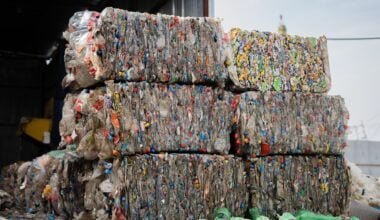Air pollution threatens human and environmental health throughout continents. Industrialization and urbanization have made air quality a global issue. This introduction illuminates air pollution’s many facets and effects. No location is immune to air pollution, from busy cities to tranquil rural areas. This article discusses how vehicle emissions, industrial activities, and agricultural practices affect air quality. The hidden risks of airborne particulate matter and poisonous chemicals have caused respiratory and cardiovascular problems beyond the apparent haze.
As pollutants enter the environment, they start a chain reaction that damages ecosystems and upsets the planet’s fragile equilibrium. These complicated relationships reveal the urgent need for a collaborative effort to confront this invisible but formidable issue.

Table of Contents
- Understanding Air Pollutants: Types and Sources
- Urban Air Pollution: Cities in the Grip of Contamination
- Industrial Emissions: A Looming Airborne Hazard
- Vehicular Exhaust: The Road to Air Quality Deterioration
- Indoor Air Quality: Unseen Pollutants Within Our Homes
- Health Impact: Breathing in the Consequences
- Environmental Ripples: Ecosystems in Peril from Air Pollution
- Social Disparities: Uneven Effects on Marginalized Communities
- Legislation and Enforcement: Battling Pollution Through Policies
- Technological Advancements: Innovations for Cleaner Air
- Beyond Today: Shaping a Cleaner Air Tomorrow
- Conclusion
Understanding Air Pollutants: Types and Sources
Air pollution is a major environmental issue because toxic compounds in the air may damage living things and the air we breathe. These contaminants come from human and natural sources, creating a complicated combination that threatens public health and the ecosystem.
Air Pollutant Types
Particulate Matter (PM)
- Tiny particles floating in the air are categorized as PM10 and PM2.5. Combustion, car emissions, construction, and dust and pollen may cause them. PM2.5 particles may reach the bloodstream and deep into the lungs, causing respiratory and cardiovascular difficulties.
Ground-Level Ozone (O3)
- Ozone (O3) is a secondary pollutant created. when sunlight combines NOx and VOCs. Smog is a significant source of respiratory difficulties, particularly in children and the elderly.
Nitrogen Oxides (NOx)
- NOx chemicals, mostly from car engines and industrial activities, cause smog and acid rain. They also irritate the lungs and impede lung function.
Sulfur Dioxide (SO2)
- Emitted by fossil fuels like coal and oil, SO2 may cause respiratory problems and particulate matter. It also acidifies soil and water.
Carbon Monoxide (CO)
- This colorless, odorless gas from incomplete combustion of carbon-containing fuels may impair oxygen delivery. Heavy traffic zones are especially a concern.
Volatile Organic Compounds (VOCs)
- Vehicle exhausts, industrial operations, and home goods like paints and solvents create volatile organic compounds (VOCs). VOCs contribute to ground-level ozone and smog and have long-term health impacts.
Heavy Metals
- Lead, mercury, and cadmium may harm health even at low levels. Vehicle emissions, industrial operations, and natural sources emit them.
Understanding air pollutants and their origins is essential to reducing air pollution and its health and environmental implications.
Urban Air Pollution: Cities in the Grip of Contamination
Air pollution lurks in metropolitan areas worldwide, despite their bright lights and tall buildings. Cities have become busy centers of industry, commerce, and culture due to urbanization. This shift has also increased air pollution alarmingly. Urban air pollution, a serious consequence of fast urban expansion, is caused by several reasons. Industrial operations, construction, vehicle emissions, and household energy usage release a complex mix of pollutants into the environment. Particulate particles, nitrogen dioxide, ozone, and volatile organic compounds pollute urban air. These pollutants cloud metropolitan skylines and enter city residents’ respiratory systems.
Chronic respiratory, cardiovascular, and potentially fatal disorders result. Children, the elderly, and socioeconomically challenged groups suffer the brunt of this poisonous load.
Multifaceted measures are needed to combat urban air pollution. Stringent pollution requirements, public transportation advocacy, and greener energy transition are essential. Green space and trash management in urban planning reduce pollution. To combat this hidden threat and restore cities’ vitality and well-being from corruption, governments, corporations, communities, and people must work together.
Industrial Emissions: A Looming Airborne Hazard
Industrial pollutants harm human and environmental health at the core of industrial growth. As manufacturers produce goods for contemporary living, they send a complicated mix of contaminants into the environment. From particle matter to greenhouse gases, these pollutants contribute to the worrying decline in air quality. Industrial emissions include energy, manufacturing, and chemical processing. In power plants and industries, fossil fuel combustion emits carbon dioxide, a major cause of climate change, as well as sulfur dioxide and nitrogen oxides, which cause acid rain and smog.
Industrial operations can produce volatile organic compounds and heavy metals, contaminating the air and endangering nearby residents. Industrial pollutants have far-reaching effects. Workers in these sectors face occupational health risks immediately. Communities near factories have higher risks of respiratory, cardiovascular, and cancer. This airborne menace demands strong regulations, technical advancements to reduce emissions, and a switch to greener energy sources. Society may improve air quality and health by recognizing and addressing industrial pollutants.
Vehicular Exhaust: The Road to Air Quality Deterioration
Our automobiles’ engines push us into a world of ease and connectedness as development continues. However, vehicle exhaust—often overlooked—costs the voyage. Through the discharge of a strong combination of contaminants, highways degrade air quality. Vehicle exhaust releases hazardous compounds into the air, polluting it. In sunlight, nitrogen oxides and volatile organic molecules generate ground-level ozone, a significant component of smog. Fine particulate particles from diesel engines may infiltrate our respiratory systems and cause several health problems. Carbon monoxide, a colorless, odorless gas, disrupts oxygen delivery.
The spread of automobiles and growing worldwide fleet exacerbate the effects of automotive emissions. In urban regions, traffic-congested roadways become air pollution hotspots. Vehicle emissions may be reduced by using electric and hybrid cars, better fuel regulations, and urban design that emphasizes public transit and bicycle facilities.
Indoor Air Quality: Unseen Pollutants Within Our Homes
Indoor air pollution is a hidden concern at home. Despite the outdoors being the main battlefield for air quality, inside air may be just as contaminated. Air pollution, many of which are invisible, may quietly harm our health. Outdoor contaminants, household activities, and building materials affect indoor air quality. Cooking, cleaning, and using some items create VOCs that cause respiratory irritation and long-term health consequences. Because houses are constructed more closely for energy efficiency, allergies, mildew, and hazardous substances may build up inside.
Radon may leak into dwellings from the ground, causing lung cancer. Secondhand smoke, a carcinogen, may enter homes and harm smokers and nonsmokers. Poor ventilation lets pollutants build, worsening these issues. Since we spend so much time at home, indoor air quality is important. Ventilation, cleaning, and air purifiers reduce interior pollution. Healthy and revitalizing home air depends on awareness and conscious decisions about household items and behaviors.
Health Impact: Breathing in the Consequences
The involuntary process of breathing highlights the susceptibility of air pollution. The health effects of dirty air affect populations globally. Air pollution affects people of all ages in cities and rural areas. The respiratory system, which supplies oxygen, transports harmful contaminants. Particulate matter, which may reach the lungs’ deepest corners, causes inflammation and worsens respiratory disorders. Nitrogen oxides and ozone inhalation causes respiratory discomfort and lung damage. Long-term urban pollution exposure has been related to chronic respiratory and cardiovascular disorders.
With growing bodies and immune systems, children are especially vulnerable to contaminated air. Older people are at danger owing to compromised respiratory and cardiovascular systems. Low-income neighborhoods with poor air quality incur a disproportionate cost. The health effects of dirty air go beyond respiratory issues. They affect medical systems and cause early deaths. As air pollution persists, public health requires comprehensive efforts, from strict legislation to technology advances, to improve air quality for everyone.
Environmental Ripples: Ecosystems in Peril from Air Pollution
Air pollution harms not just humans but also the complex web of life that supports our planet. Airborne pollutants degrade ecosystems, from lush forests to pure aquatic worlds. Various methods affect ecosystems due to air pollution. Particles on plants hinder photosynthesis and growth. Acid rain from pollutants like sulfur dioxide and nitrogen oxides affects soil and water, reducing ecological diversity. Pollutants deplete oxygen and damage aquatic creatures.
The lungs of the Earth, forests, are not immune to air pollution. Pollutant-trapped tree canopies defoliate and weaken trees. This affects many species’ habitats and reduces the forest’s carbon sink. Airborne pollution increase ocean acidification, harming coral reefs and marine life. Harm to one creature affects the whole ecosystem, from bacteria to mammals. Air pollution’s devastating effects on the environment highlight the need for sustainable behaviors, cleaner technology, and global action to protect the delicate web of life that relies on our shared air.
Social Disparities: Uneven Effects on Marginalized Communities
In the apparently indiscriminate reach of air pollution, vulnerable populations bear its burden disproportionately. These people already confront many obstacles, but filthy air exacerbates socioeconomic inequalities. Low-income areas near industrial zones and roads have more air pollution. Residents’ sensitivity to respiratory ailments and other health difficulties is increased by a lack of green places and healthcare. Thus, the least able to cope bear the brunt of contaminant exposure.
These communities put children’s health and future at danger. Pollution during key development might cause long-term health issues and cognitive impairment. Pollution also harms the elderly, who may have previous health issues.Environmental justice requires acknowledging social-environmental interdependence. Technological and regulatory solutions that target the most vulnerable are needed to reduce air pollution. Cleaner industry, infrastructure, and urban planning in disadvantaged regions may help society distribute clean air and its advantages more evenly.
Legislation and Enforcement: Battling Pollution Through Policies
Legislation and strict enforcement are key to fighting air pollution. Cleaner skies and healthier communities depend on air quality regulations. Global governments have recognised the seriousness of air pollution and implemented regulations to reduce emissions from diverse sources. These policies include industry pollution requirements, car emission laws, and urban design recommendations to improve air quality. Stricter limitations on sulfur dioxide, nitrogen oxides, and particulate matter are essential to reducing their harm.
However, strong enforcement is needed to make these regulations work. Regular monitoring, public reporting, and sanctions for non-compliance encourage pollution control in companies and people. Technology is essential for real-time air quality monitoring and pollution detection. Air pollution has no boundaries, thus worldwide collaboration is crucial. Transboundary contaminants may harm distant continents. Countries must work together to solve this global problem. The fight against air pollution reflects society’s dedication to public health and the environment. This dedication is reflected in laws and enforcement that ensure clean air and a safer planet for future generations.
Technological Advancements: Innovations for Cleaner Air
In the face of air pollution, technology offers creative ways to purify the air we breathe. Cutting-edge innovations reduce pollution’s effects on human health and the environment in a new age. Air quality monitoring systems with modern sensors and data analytics deliver real-time pollution data. Individuals, communities, and politicians may make educated choices to reduce exposure and pollution sources. New technologies like remote sensing and satellite images let us monitor pollution globally.
Electric and hybrid cars are changing the polluting transportation industry. These greener options lower toxic gases and particles, ensuring sustainable urban travel. In addition, engine design and pollution control advances are making conventional cars more efficient and environmentally friendly. Scrubbers and catalytic converters are helping industries reduce pollution. Solar and wind power reduce greenhouse gas emissions and improve air quality. In urban planning, technology and air quality work together. Smart cities encourage pedestrian-friendly settings, efficient public transit, and green areas to improve urban air.
Beyond Today: Shaping a Cleaner Air Tomorrow
The quest for cleaner air is a commitment to a future where our air revitalizes rather than endangers. We must work together and dedicate ourselves to improving future while dealing with air pollution’s effects. Education and awareness efforts are crucial to environmental awareness. Society may promote cleaner habits by educating people about air pollution’s causes and effects. Small improvements, like energy-efficient gadgets and public transit, may add up. Collaboration across industries and countries is crucial. Governments, businesses, research institutions, and communities must collaborate on information, innovations, and best practices.
International accords like the Paris Agreement demonstrate worldwide commitment to climate change and air quality. Research and development advances solutions. Researchers are developing new air purification methods, effective filtration systems, and renewable energy sources to clean the air for future generations. Sustainable urban planning is also important. Green areas, efficient transit networks, and pedestrian-friendly architecture improve air quality and quality of life.
Conclusion
We are at a crossroads in the quest for cleaner air. Our decisions now will affect future generations. Air pollution’s worldwide impact on health, ecology, and social fairness makes it urgent. Air pollution affects every facet of our existence, from minute particles in our bodies to ecosystem-wide changes. The understanding of this quiet menace is not the end of our path. A communal resolve to change starts everything over. Technological innovation, strict rules, and community participation may solve this challenge. Understanding contaminants, their effects on disadvantaged people, and technological advances helps us create cleaner air.
Let us remember that the air we want is for ourselves and the interwoven web of life on Earth as we go on. We can create a future with cleaner skies, better lungs, and a more peaceful world by recognizing clean air as a right and a shared obligation.








